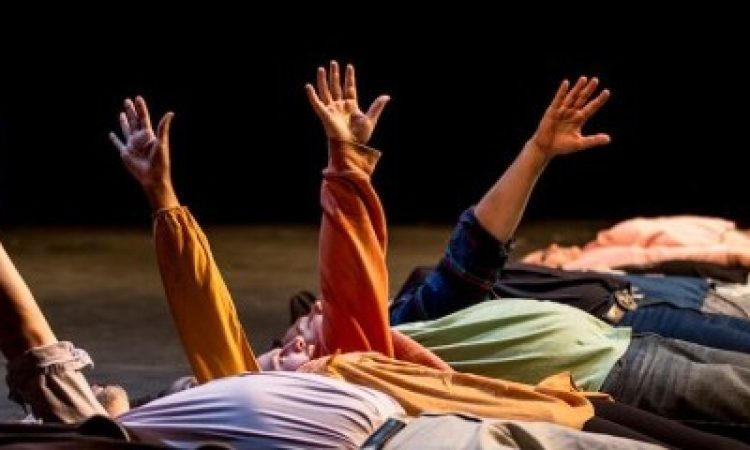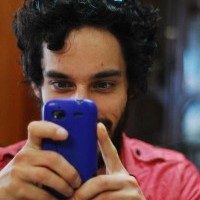Pig Iron’s A Period of Animate Existence is described as “symphonic theatre.” Utilizing almost no theatrical characters, five distinct sections present five distinct settings, casts, and theatrical elements, each offering contrasting perspectives on the central question: what do we think of the fact that we are becoming extinct? Between them, basic conflicts of order and chaos, unity and individuality, and nature and machine play out.
From a gap between the curtains a column of light is projected. It courses across the balcony, from left to right, for over 90 seconds, to a low moan of cellos. It’s 2001: A Space Odyssey. It’s music and light, math and heat: the most basic elements of both emotional manipulation and physics. A square gap appears in the curtains, opening and closing, revealing behind it a solar eclipse which increases and decreases in intensity. The blinking eye of a half-blind lizard a billion years ago. With it, our perspective and focus on the eclipse shudders: our hazy, obscured view of the world.
Brightly lit, movement two is cursed with a better perspective. Center stage, Daniel de Jesús picks out a steady melody on his a cello over a tight, rhythmic snare. Twenty-five chorus members stride in snaking lines to the beat of his cello. “Four billion years is not enough to accomplish anything compared to this moment,” he sings. Measured tones—lightly decorated by the bright cello thrumming. The primacy of math and physics and beauty remain from movement one. Here, though, the long view of history teaches us that our own extinction is inevitable, and this realization clashes with the sensual reality of the present.
Movement three presents us with our first “character”: an old, tin food truck. On a kitschy lightboard, it presents its offerings: chicken gyros, halal meat, etc.; chaotically, they flash across the screen, gaudy and lurid. Then a message appears in clean white type: “Humans are the reproductive organs of the machine.” In rhythmic green type new offerings flash: oxygen, wood, philosophy, law, siblings. This truck presents us with a mechanistic philosophy: “Here I was born. And here I will die.”
Movement four is the “messy” one. A pageant is presented by children and elderly folks: seniors dressed as trees, the planet-colored beach balls, and songs about volcanoes, a precocious twelve-year-old asking big questions, angry youths protesting climate change. This is the abundance of life that cannot be contained; that the section is long-winded and poorly paced unfortunately overstates its point.
In movement five, a dozen trilobites in fascistic red and tan remain, overlooking three fighting pads, where humans wrestle to the haunting and alienating voices of experimental music choir The Crossing. The final moment presents two wrestlers in one small circle under bright light, one squatting and scrambling for a grapple, the other crawling, both blind, wandering, never making contact. Light drops out on a hard close.
A Period of Animate Existence, Pig Iron Theatre Company, The Annenberg Center for the Performing Arts, September 22-24, http://fringearts.com/event/period-animate-existence/






